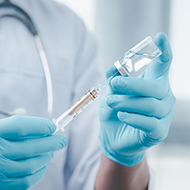Study uncovers genes contributing to Thoroughbred fractures
Approximately 60 horses euthanised on racecourses due to fractures each year.
New research from the Royal Veterinary College (RVC) has identified 112 genes which might be contributing to bone fracture risk among Thoroughbred horses.
Although a large number of these genes have never been studied, researchers were able to demonstrate how these genes regulate the bone matrix.
Due to the force that their bones can experience, Thoroughbred horses are particularly susceptible to bone fractures. The complexity of the condition means that fractures are also a leading cause of euthanasia, with approximately 60 horses euthanised at UK racecourses each year.
This genetic study is the second of a series from RVC, as it explores the genetic mechanisms behind fracture risk.
The project saw a group of researchers utilise a polygenic risk score for fracture risk, using it to establish a new model examining how stem cells make bone-forming cells for horses at high and low risk of bone fracture.
Using this model, a team of researchers measured every gene that was expressed by the cells. This would then identify the genes with different expression levels in bone cells of horses with higher or lower risk of fractures.
Researchers were able to identify 112 genes involved in fracture risk and demonstrate how these genes regulate the bone matrix.
Many of these genes have not been studied before and so more research is needed to understand their function in bone cells. Additional research is also being conducted to validate the new risk-scoring system in another group of horses.
Debbie Guest, senior research fellow at RVC, said: “In this study, we have identified many new genes which have altered expression in bone cells from high-risk horses.
“For some of these genes, we know that they play a role in regulating the bone matrix. We can now begin to develop a deeper understanding of how bone tissue is altered in high-risk horses and new interventions to reduce their risk.”
The first study in the research series discovered that collagen type III, required for normal bone formation, was expressed at lower levels in the bone cells from horses at high genetic risk of fracture. This is as a result of a change in their DNA sequences affecting how much collagen III is produced.
The latest study has been published in the journal Anim Genet. The previous study is published in the journal Animals.
Image © Shutterstock



 The VMD has added anaphylaxis to the SPC of Solensia 7 mg/ml Solution for Injection for Cats.
The VMD has added anaphylaxis to the SPC of Solensia 7 mg/ml Solution for Injection for Cats.